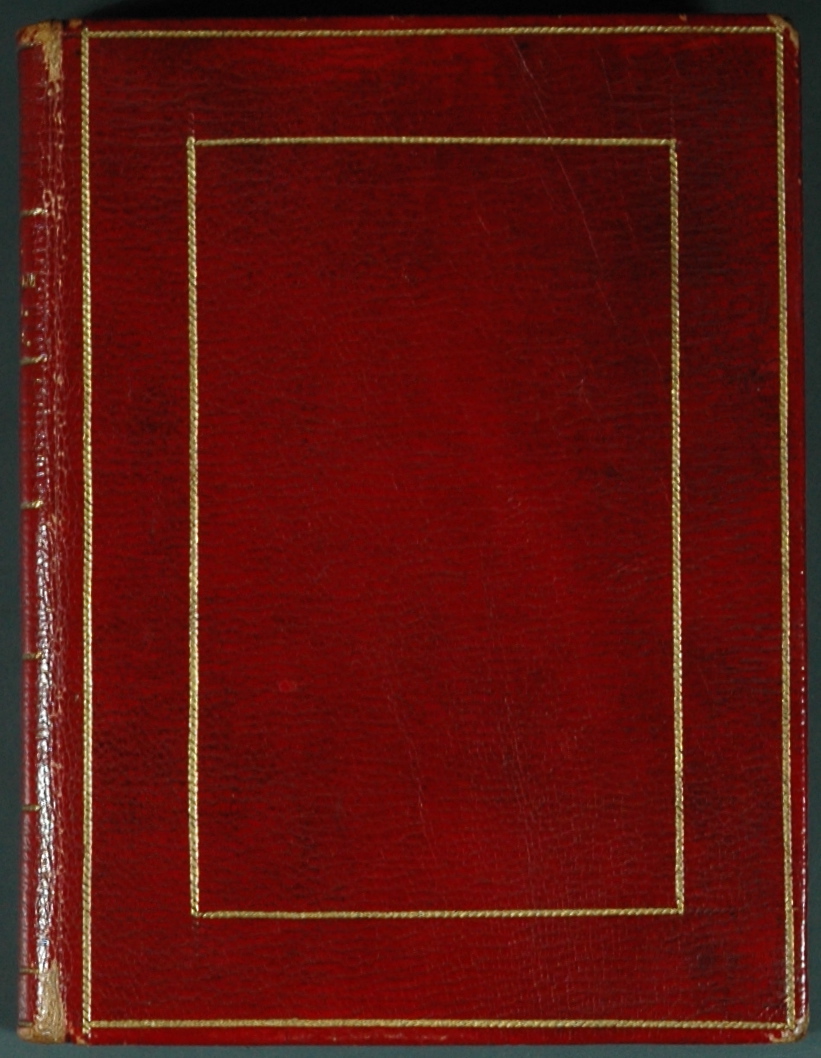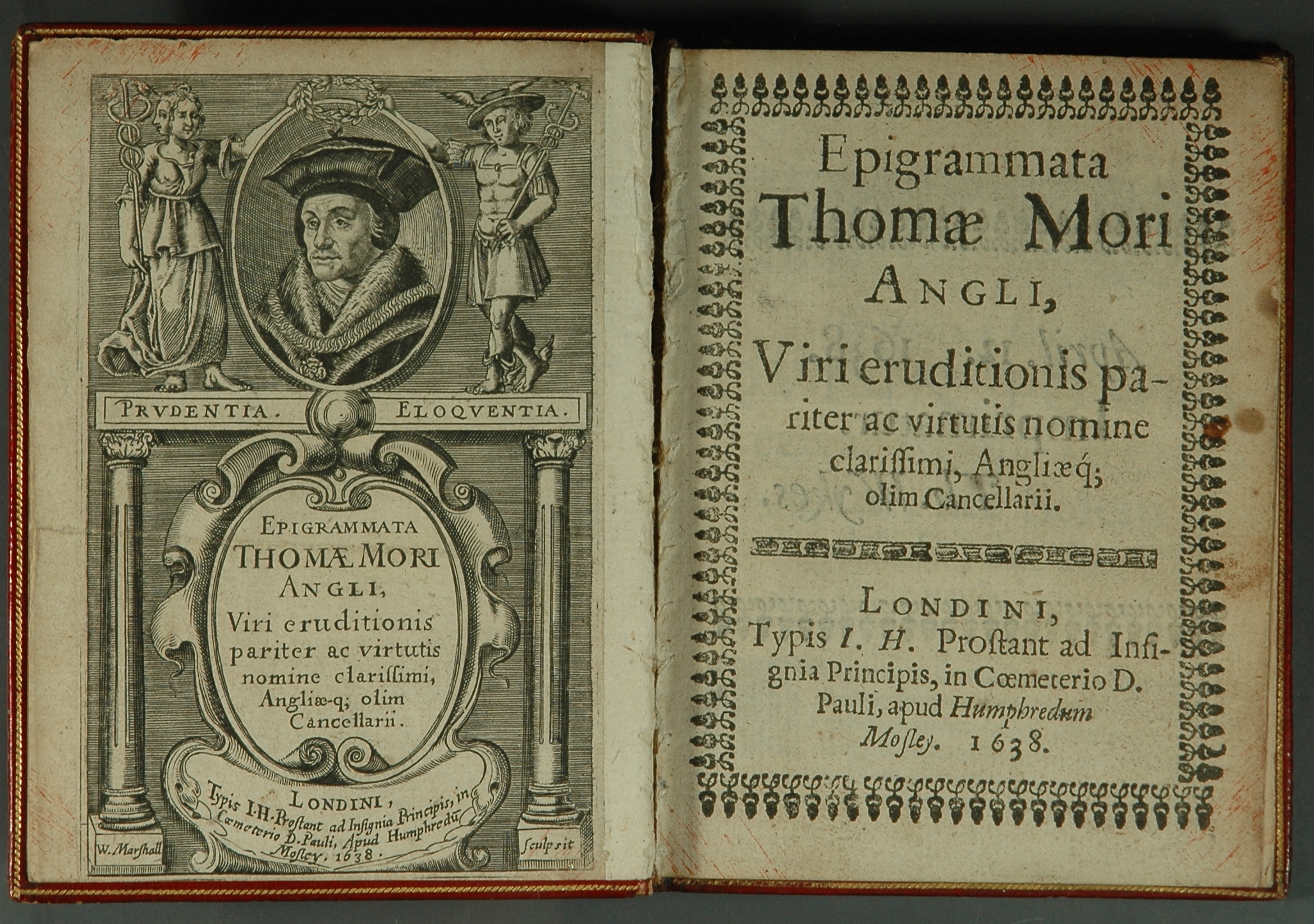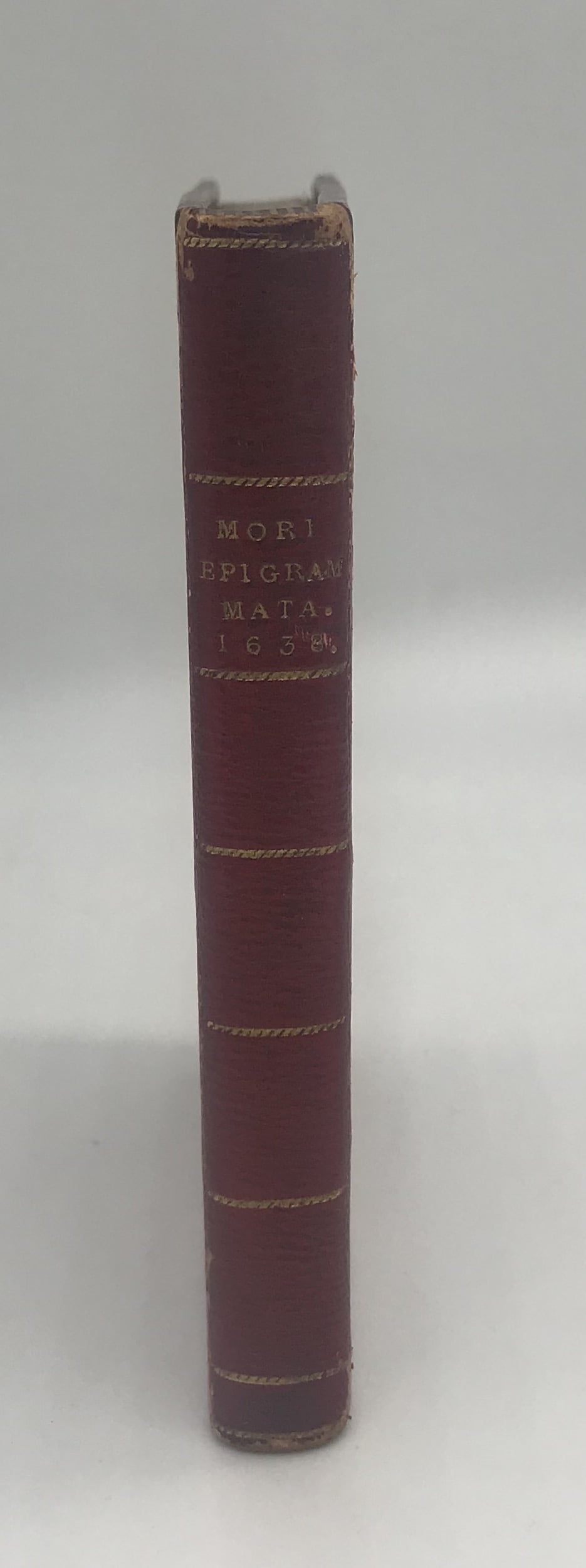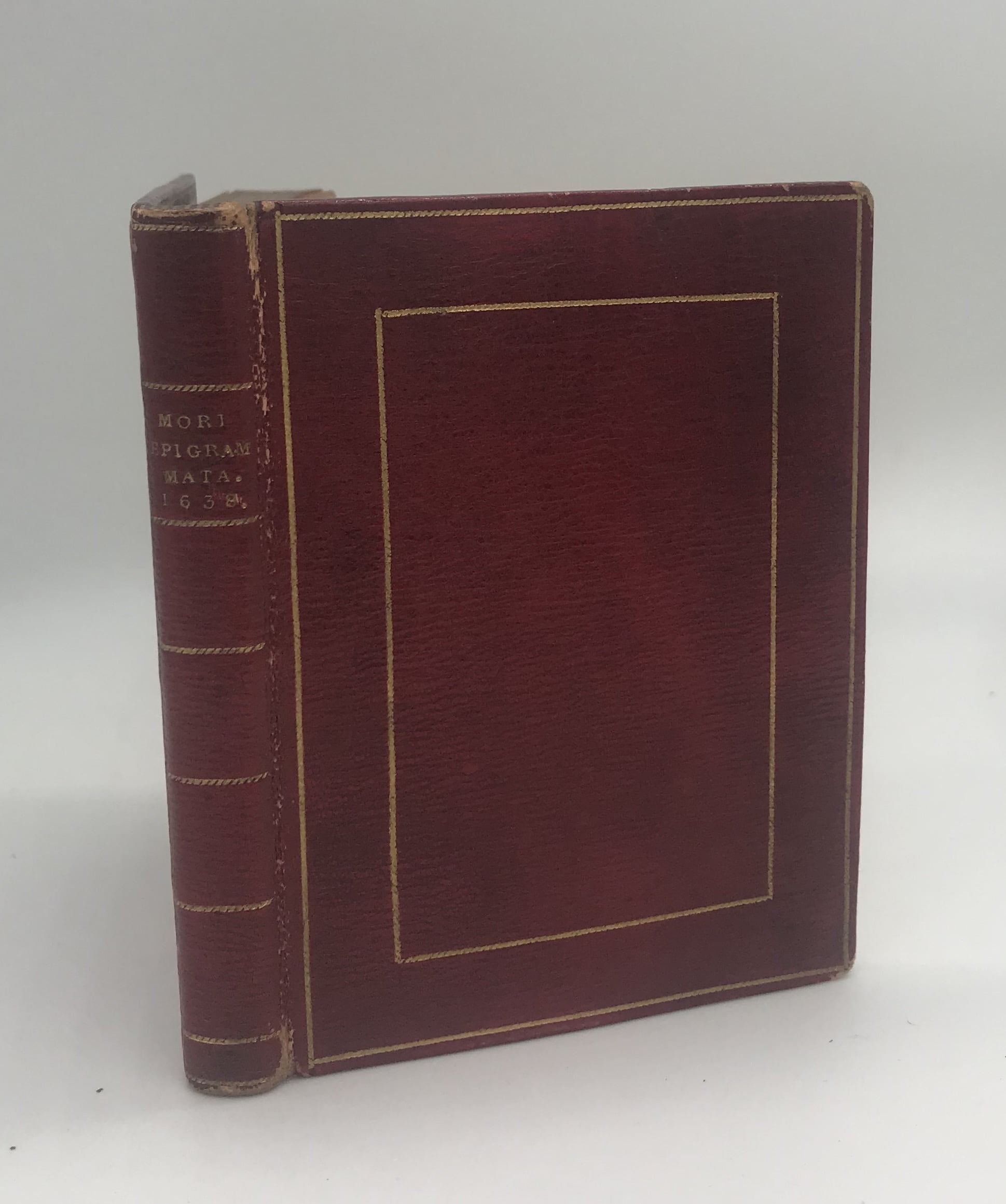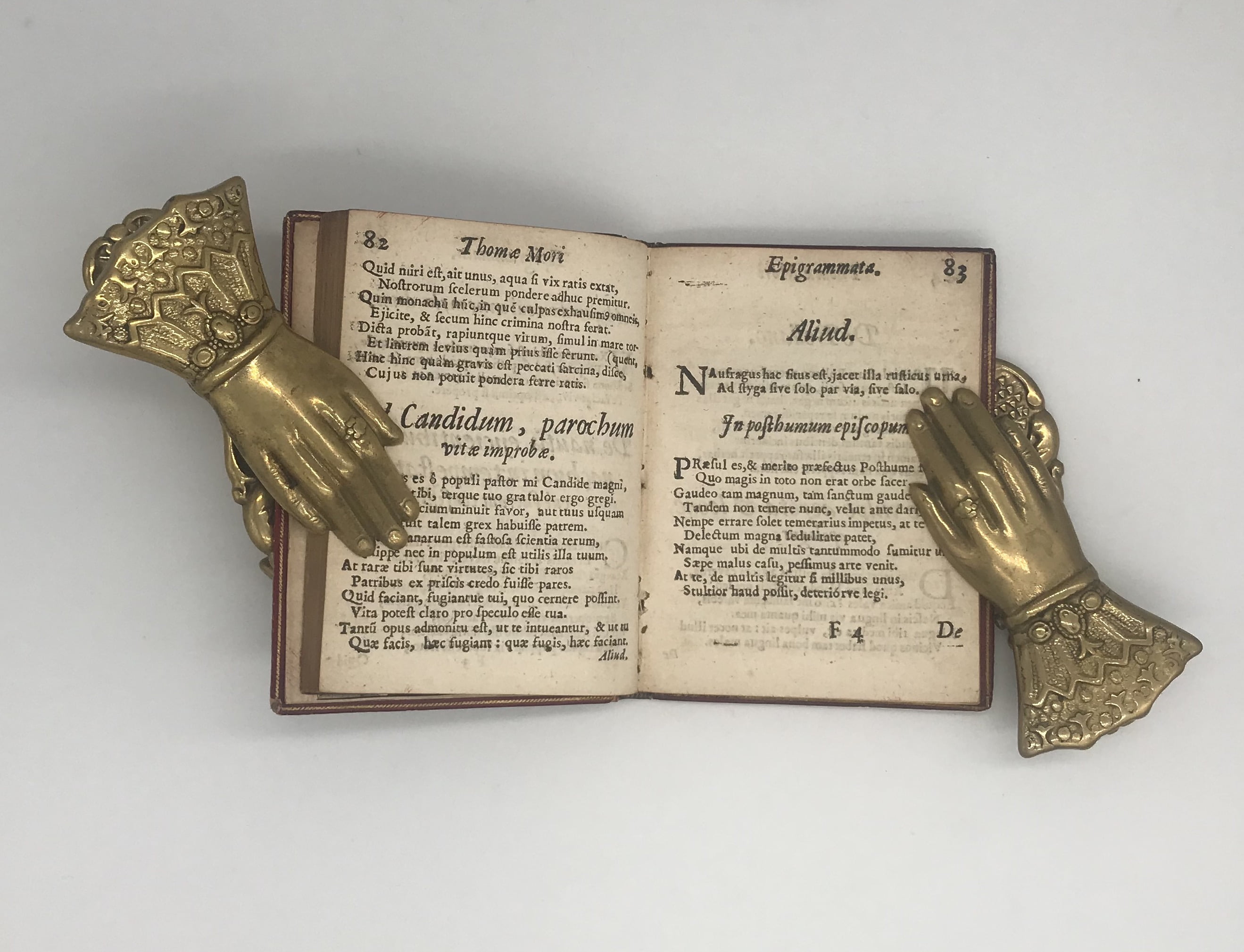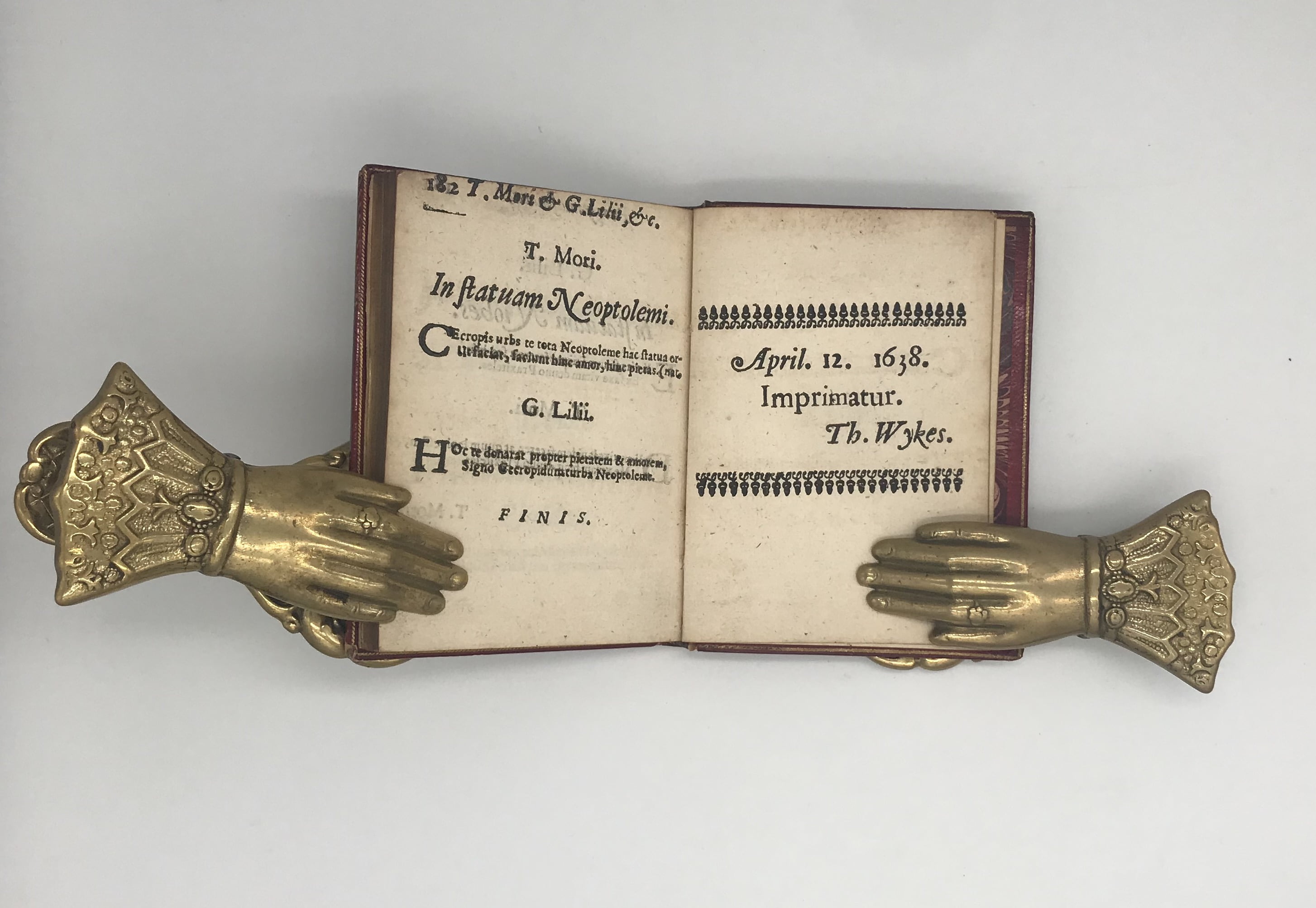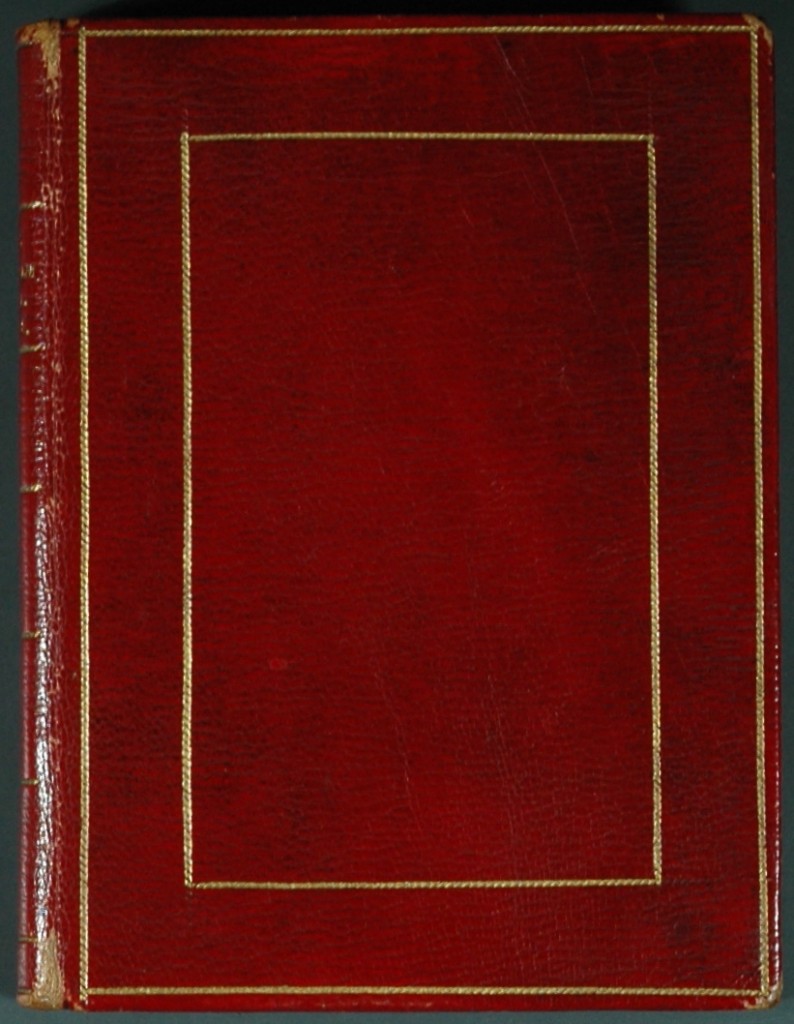MORE, St. Thomas
THE FIRST EDITION PRINTED IN ENGLAND
Epigrammata Thomae Mori Angli, viri eruditiones pariter ac virtutis nomine clarissimi Angliaeq[ue] olim Cancellarii.
London, typis I[ohn]. H[aviland] ..., apud Humphredum Mosley, 1638£2,950.00
16mo. pp. [iv], 182, [ii] lacking last two blanks. Roman letter, some Italic. Title within typographical border, fine additional engraved architectural title page with portrait of More within oval above, with figures of Prudence and Eloquence to sides, signed ‘W. Marshall sculpsit’, small woodcut initials, typogrphical head-pieces and ornaments, Imprimatur on verso of title page and on leaf M6 verso, ‘April. 12. 1638. Imprimatur. Th. Wykes.’, leather bookplate of Vernon Watney on pastedown. Light age yellowing, upper margin cut a little close, fractionally trimming a few headlines. A very good copy, crisp and clean, in English straight grained morocco c.1800, covers gilt ruled in a panel design, flat spine gilt ruled and gilt lettered, extremities slightly rubbed. a.e.g.
Second separate edition of the Epigrams of St. Thomas More, the first to be printed in England, and one of the rare editions of any works of More to be printed in England after his death. More translated epigrams from the ‘Greek Anthology’ of Maximos Planudes into Ciceronian Latin which, after circulating in manuscript, were collected by Erasmus and twice printed by Froben in 1518. They were first published separately in 1520 in an edition which was substantially revised by More for its first independent appearance and presents quite a different text. Three of the epigrams which appeared in the 1518 printing were omitted and thirteen new ones added. Remarkably this is the only separate printing of these epigrams since that edition of 1520, and even more remarkably it was published in England where St. Thomas More status as a Catholic Martyr would normally have precluded publication; it is the only edition of the Epigrammata listed in STC. More’s Epigrammata is divided in two parts; in the ‘Progymnasmata’, here placed at the end, he vied with Lily for the aptest rendering of epigrams from the ‘Greek Anthology’ into Latin and in the ‘Epigrammata’ proper he composed his own epigrams. Little is known about when and why the poems were first written or how they first circulated though they seem to have been written over a period of as much as twenty years. In them More reworks material from many classical writers and weaves in biblical texts, adapts traditional jests, Aesopic fables, and translates two near contemporaneous English love lyrics. His topics are extremely diverse and his range much broader than his fellow humanists, though he eschews a favorite renaissance type, the erotic epigram. At one extreme he writes about foolish astrologers, prostitutes, cuckolds, a frenchified courtier; at the other there are reflections upon kingship, government, the brevity of life and death. In mood too the epigrams vary tremendously. There are jokes, slapstick comedy, scatology, satiric jabs, expressions of friendship, ironic reflections, lyric moments and epitaphs. More also enjoyed writing variations upon a theme as in his seven epigrams upon two beggars, one blind and one lame, who are each others support. There are a wide range of addressees including several to Henry VIII, humanist friends, his children, a fat priest, a woman More loved long ago, the Archbishops of York and Canterbury and in some instances himself, along with dramatic dialogues and monologues. The epigram on Wolsey is remarkable as a dedicatory epigram by proxy, begging the Cardinal’s acceptance of Erasmus’ New Testament of 1516. “(it is the) vivid interest in life in all its aspects that makes More’s Epigrammata incomparably the best book of Latin epigrams in the sixteenth century” Leicester Bradner.
STC. 18086. ESTC, S112885. Gibson 58.In stock


